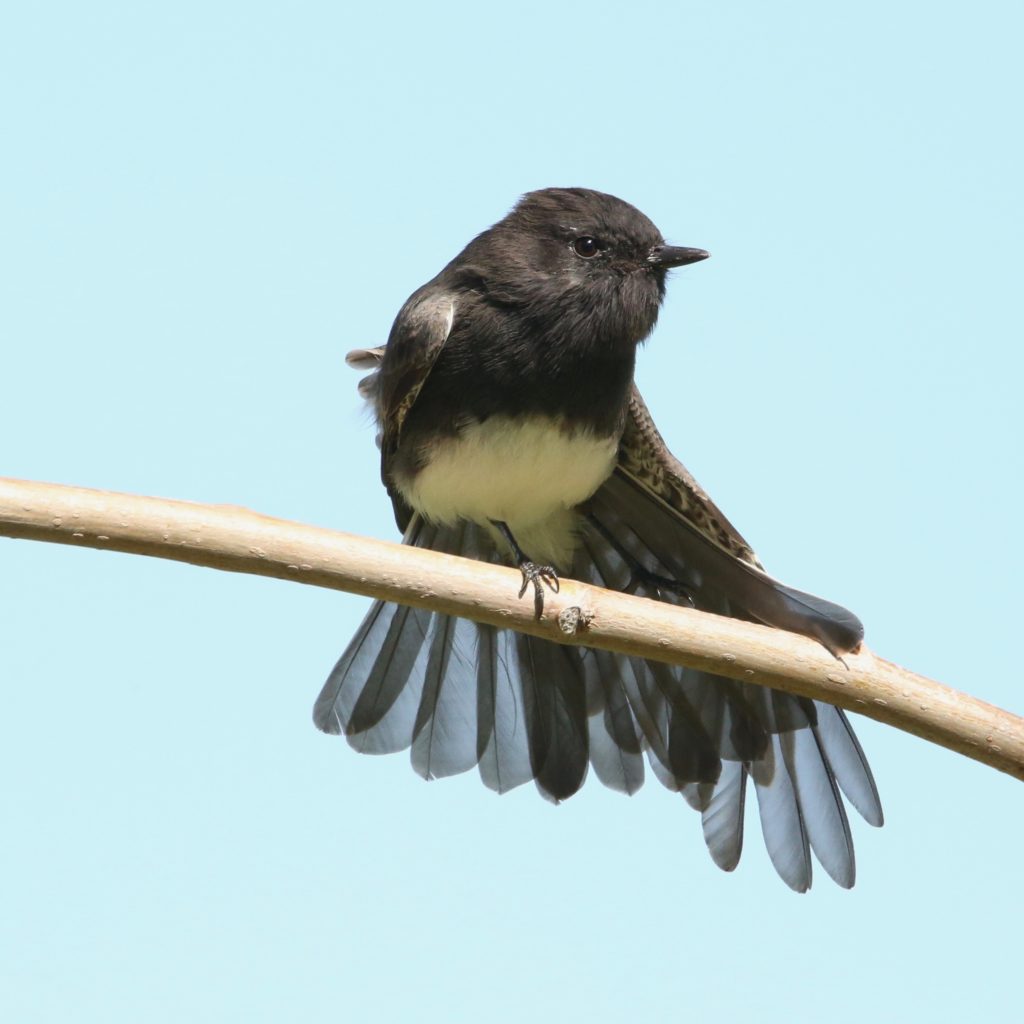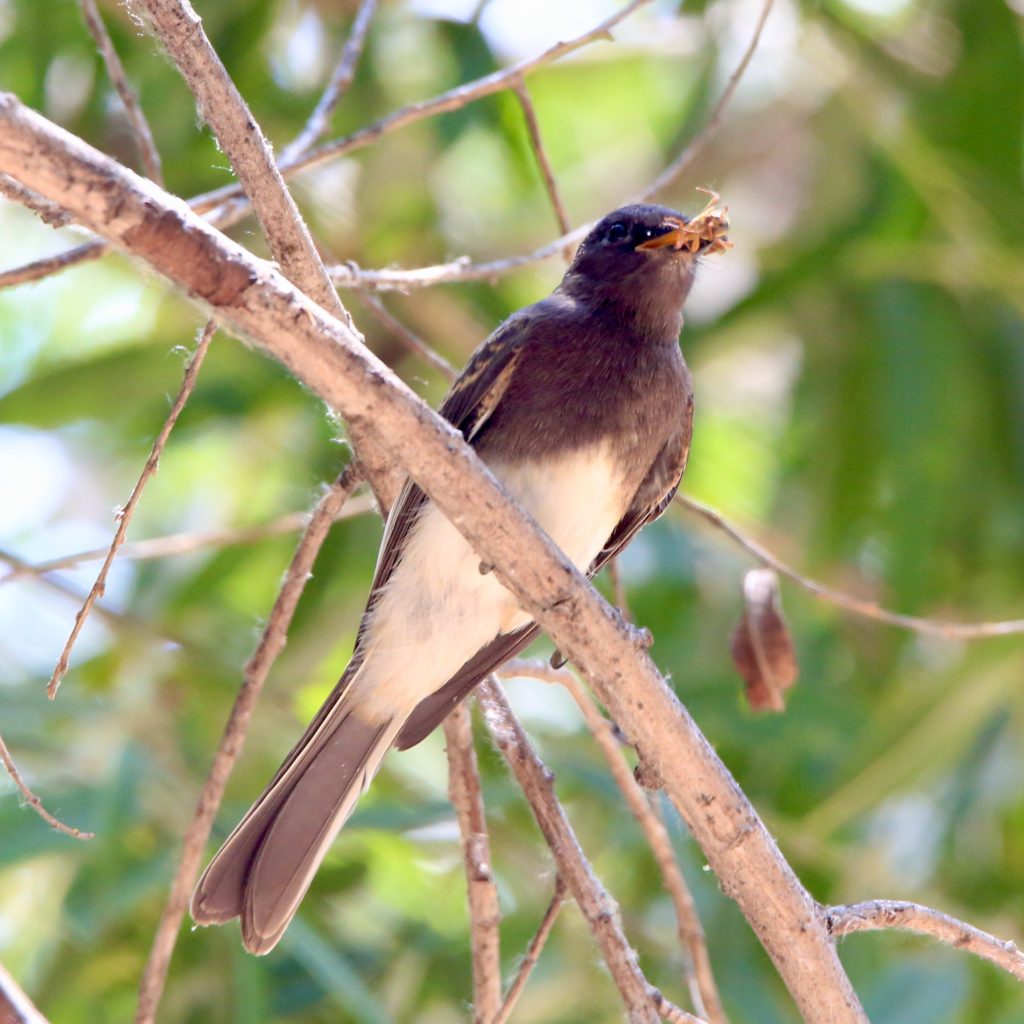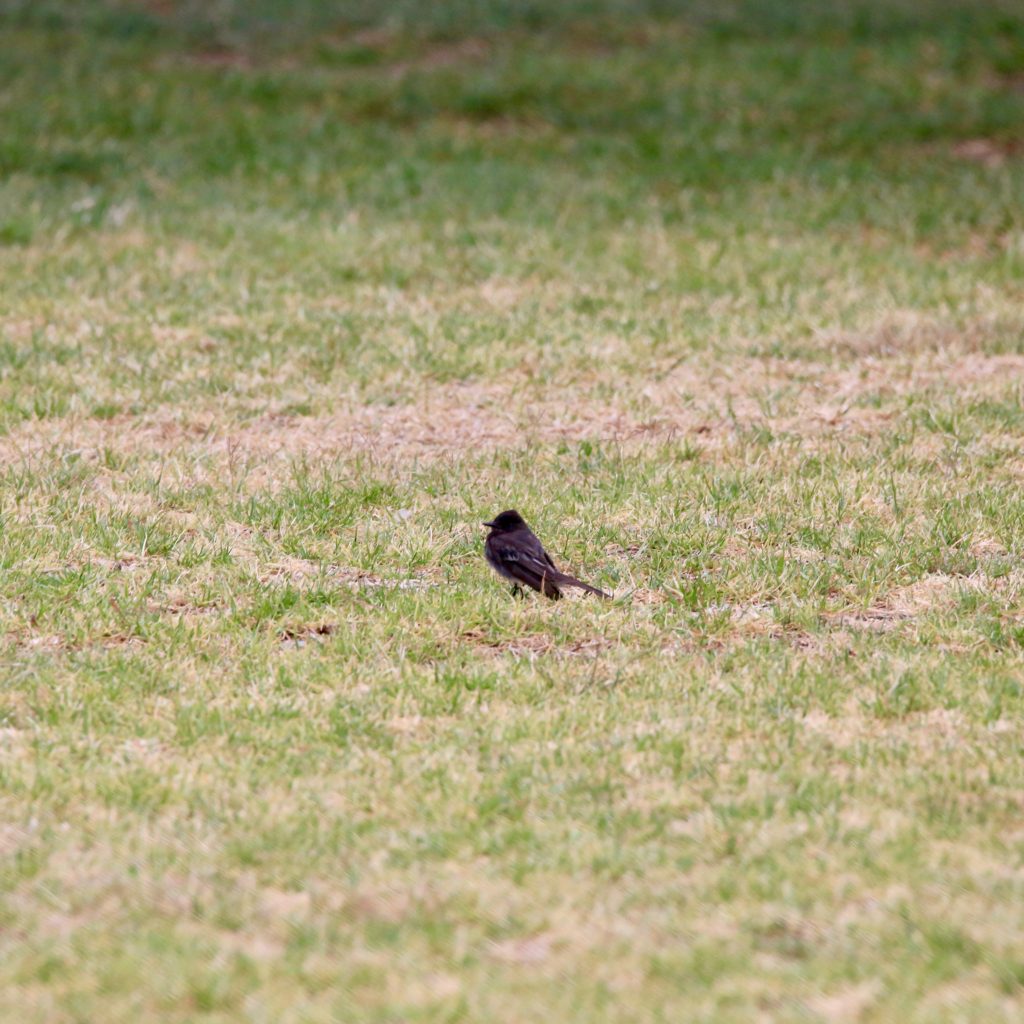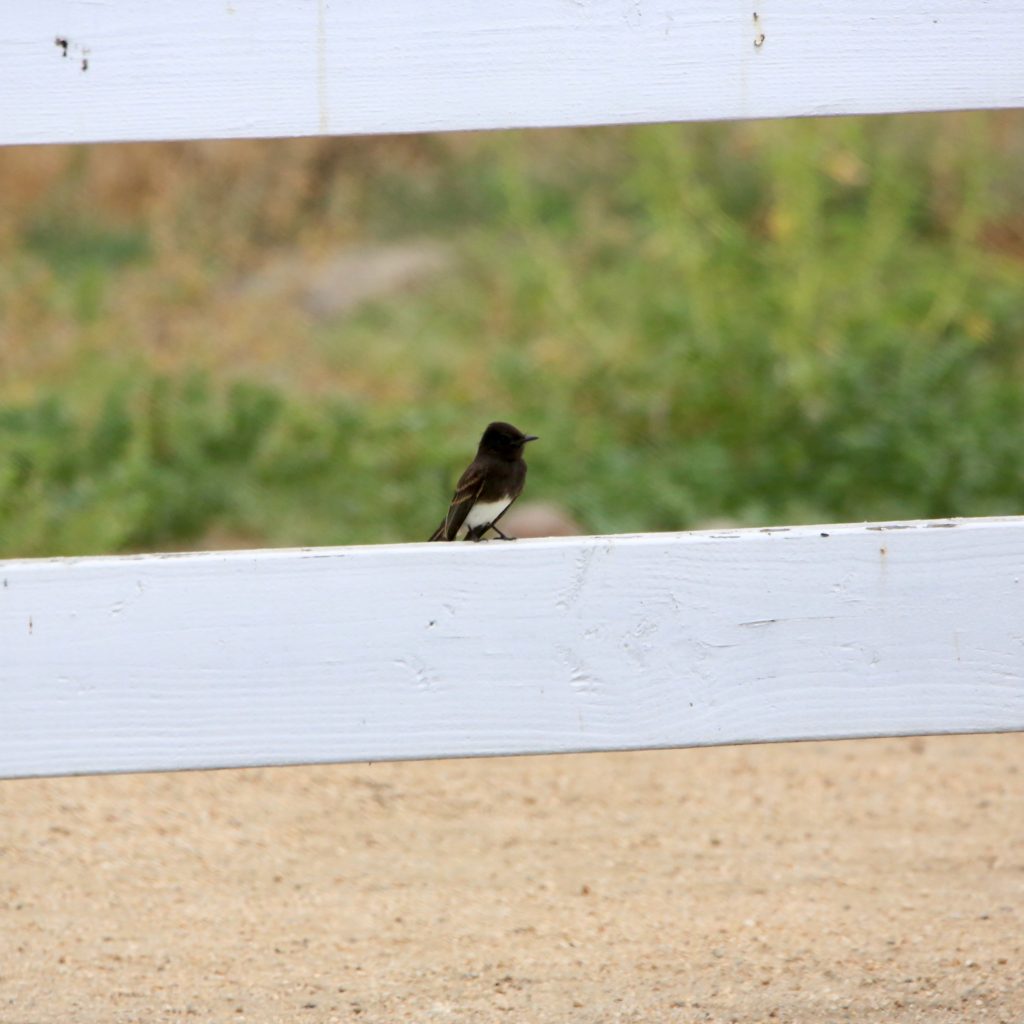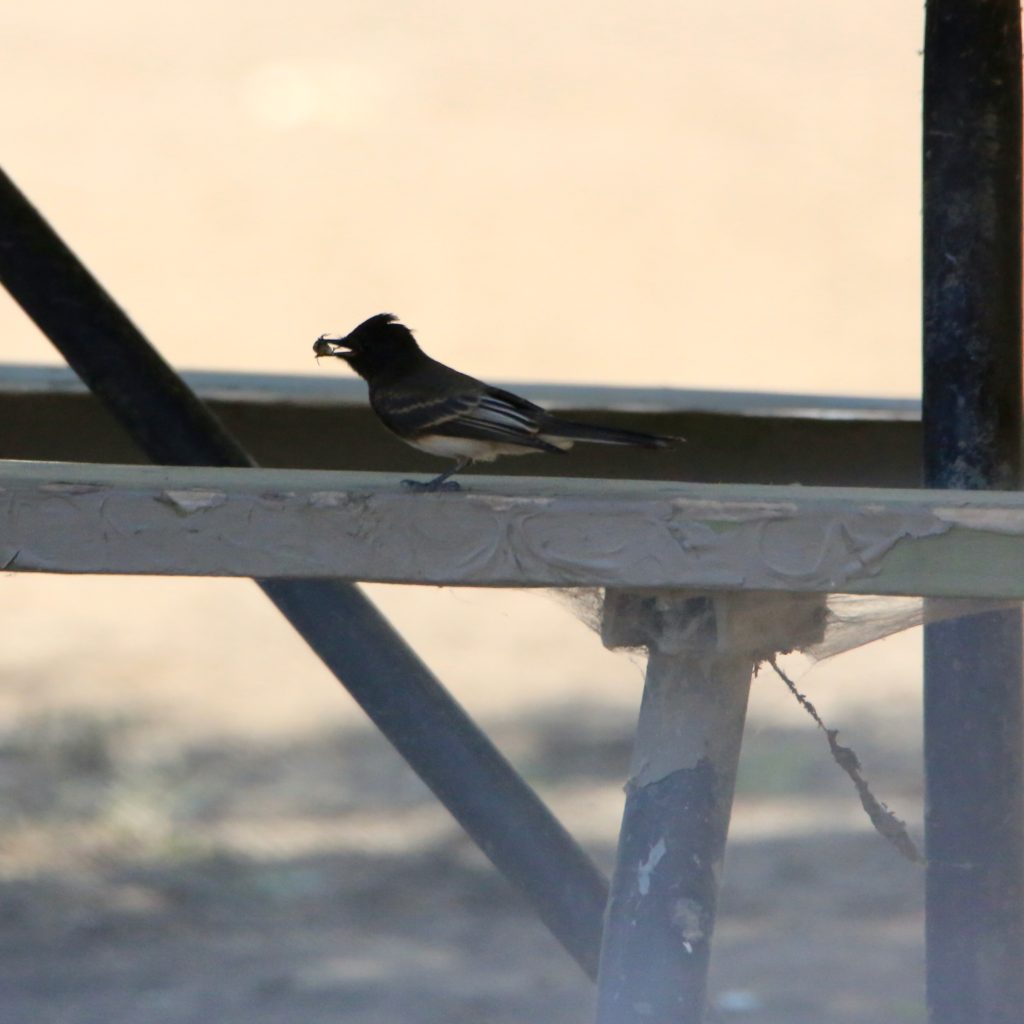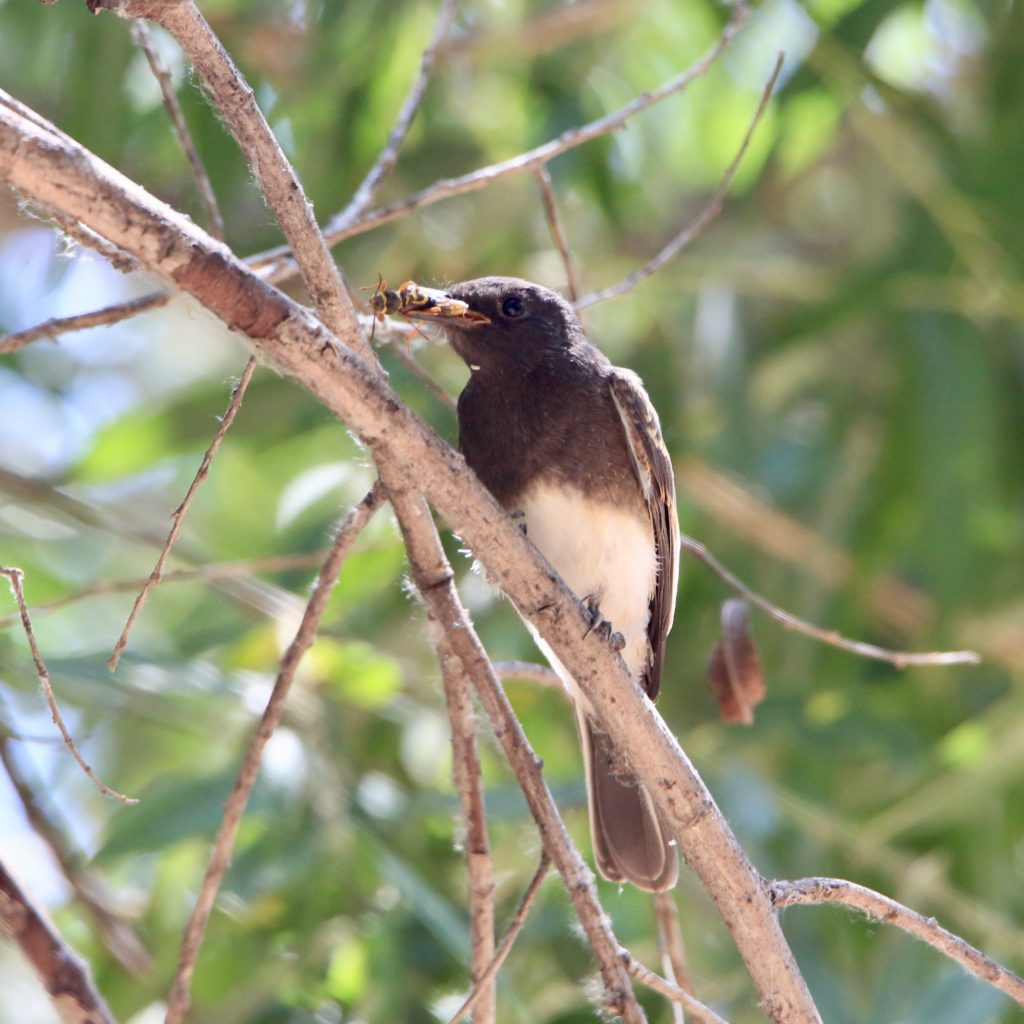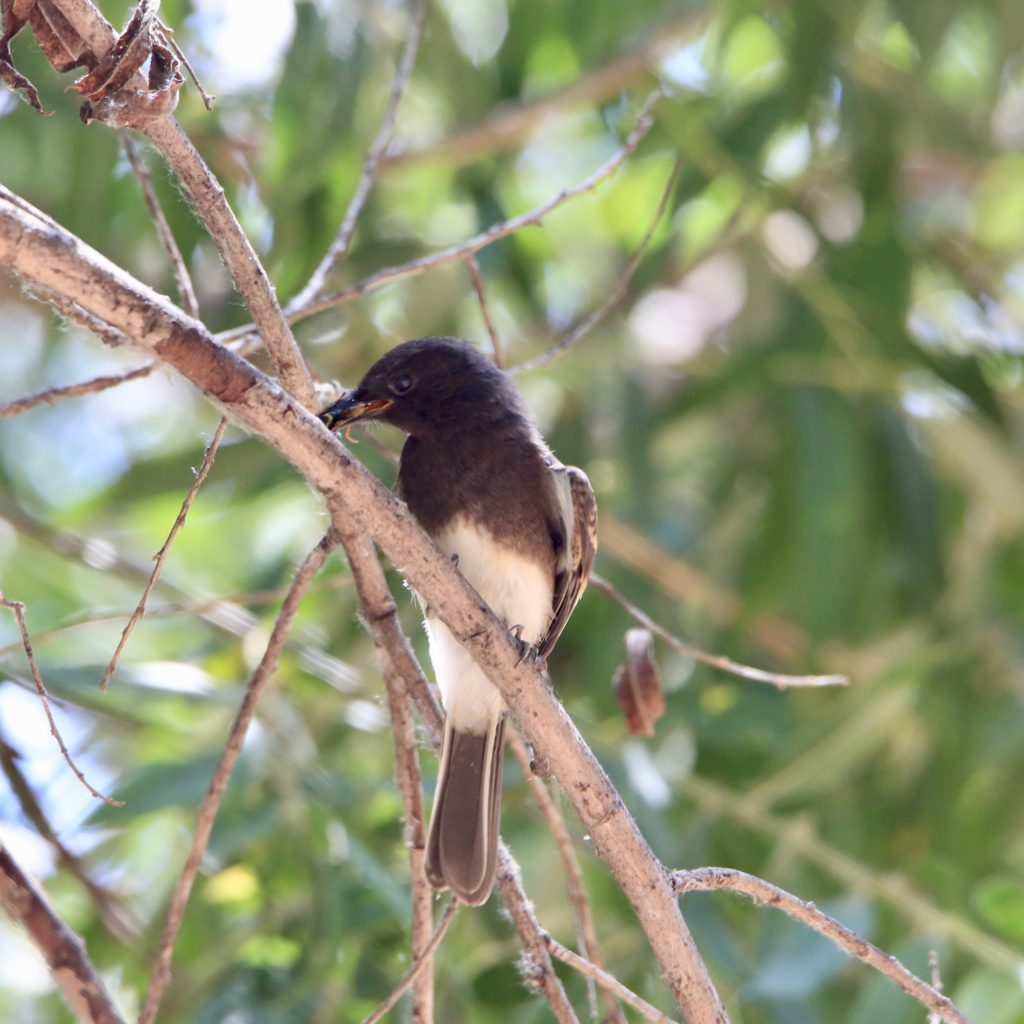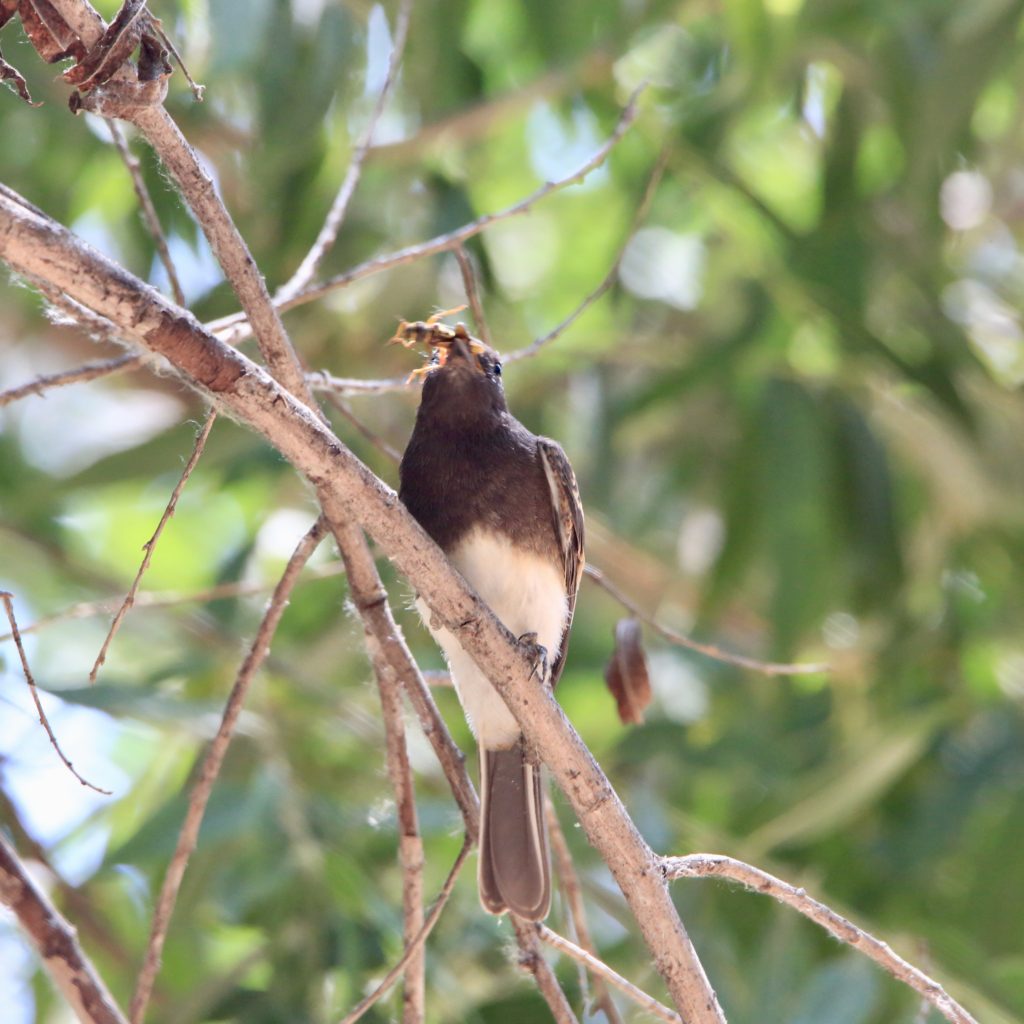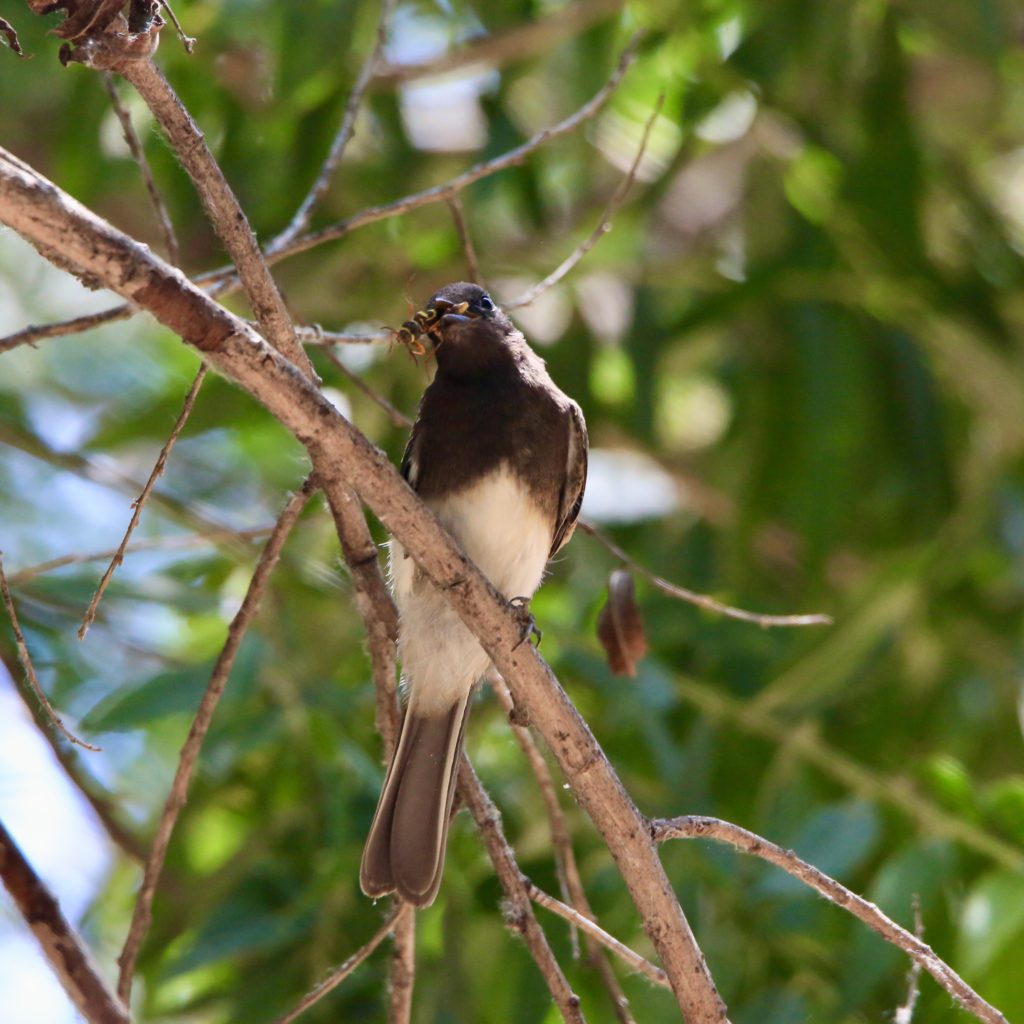
Black Phoebe
A Black Phoebe is a fun bird to see while bird watching. Below are some tips to help you identify Black Phoebes. We have also put together a list of fun Black Phoebe t-shirts, Black Phoebe bird patches, bird houses, bird feeders, binoculars, stickers and other fun bird watching items.
About Black Phoebes
These dapper flycatchers are common in the western United States. Their sharp calls can be heard along streams and in the open field. They perch low on shrubs, rocks, low trees and branches. Their distinctive tail-wagging makes them easy to identify from afar. Some of their distinctive features include:
Description and Identification
Black Phoebes have predominantly black plumage on their head, upperparts and breasts. In
contrast, their bellies and under-tails are white. An inverted white V can be noticed on their lower
breast. These tiny birds are 6.3 inches long and weigh about 0.5-0.8 oz. Unlike most other birds,
both males and females are physically identical. The color of the plumage can easily distinguish
younglings from adults; younglings have a brown plumage which eventually transitions into
black as they reach adulthood. Black phoebes can easily be distinguished through their distinct
“tail-wagging motion”, in which they lower their tail while their feathers are spread out. These birds
have a characteristic call that contains a loud seem and a sharp tip. They also sing a song
containing 2 phrases, which is commonly sung by the males.
Black Phoebe Color Pattern
These medium flycatchers have black upperparts and white underparts. Their undertail is also white while the outer tail feathers have white shades. The bill, legs, and eyes are black. Their head is darker compared to the rest of the upperparts while the wings have gray edges.
Black Phoebe Size
Black phoebes are small songbirds which are plump, long-tailed and have large heads. They have a long but thin bill. Black phoebes are larger than American Goldfinches but dwarfed by Scrub-jays.
The relative size of both sexes
- Length range: 6.3 in (16 cm)
- Weight: 0.5-0.8 oz (15-22 g)
- Wingspan range: 10.5-11 in (27-28 cm)
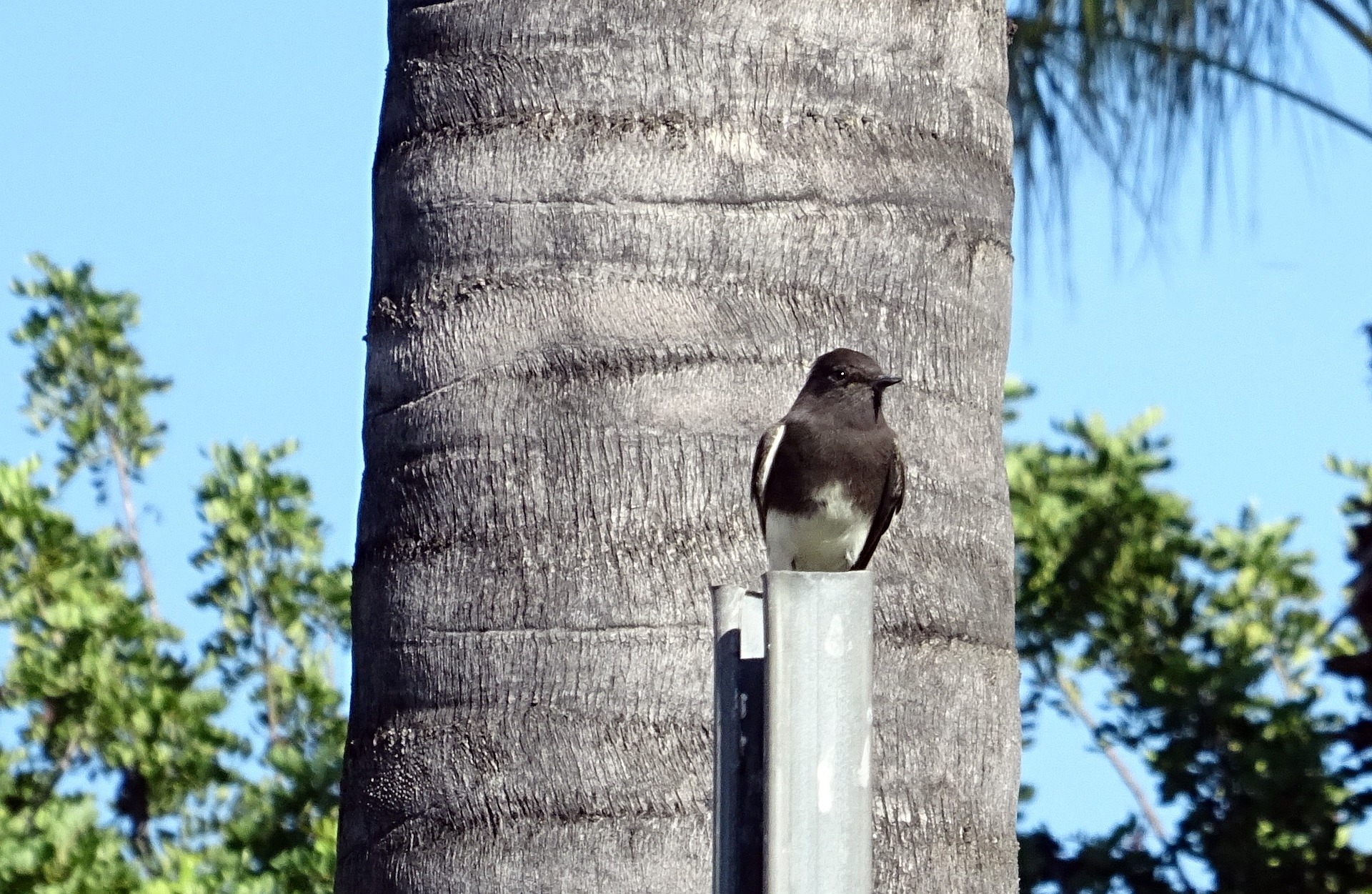
Black Phoebe Behavior
They assume an upright posture when perching and continuously pump their tail up and down when perched. They prefer perching near water bodies and make quick darts to catch flying insects in midair. They forage by watching their prey then making quick darts or hovering around to catch insects from foliage.
What Black Phoebe Eat
Black Phoebes are almost exclusively carnivores that prefer a diet of arthropods and insects.
These may include wasps, flies, bugs, damselflies, termites, spiders and grasshoppers. On rare
occasions, they might be seen eating small fish or berries. Black Phoebes perch themselves on
shady branches near water bodies waiting patiently for their prey. Once these birds spot their prey,
they sally out to catch and eat their prey in mid-air. These birds also hover over ground or water
searching for insects, sometimes diving into water bodies to catch minnows right below the surface
of the water. Black Phoebes mostly feed in day time but they might be spotted eating insects around
electric lights in the evening.
Black Phoebes predominantly feed on insects and arthropods. They feed on bees, caterpillars, wasps, flies, bugs, termites, spiders, dragonflies and damselflies. Sometimes, they feed on small berries. Even though they feed mainly during the day, you can feed them catching insects near electric lights in the evening.
Where Black Phoebes Live
Black Phoebes prefer to reside near water bodies that have a decent supply of mud which they
require for nest-building. Riverbanks, coastal cliffs, or park fountains are spots usually chosen by
these birds. During winter, migratory Black Phoebes might move to similar habitats but at lower
elevations. The vagrancy and irregular range of Black Phoebes can be explained by their specific
habitat requirements.
They are common near water bodies. Some of the ideal places to spot them are near cliffs, beaches, riverbanks, cattle tanks, parks, and backyards. They get mud from such places to build their nest.
Range and Migration
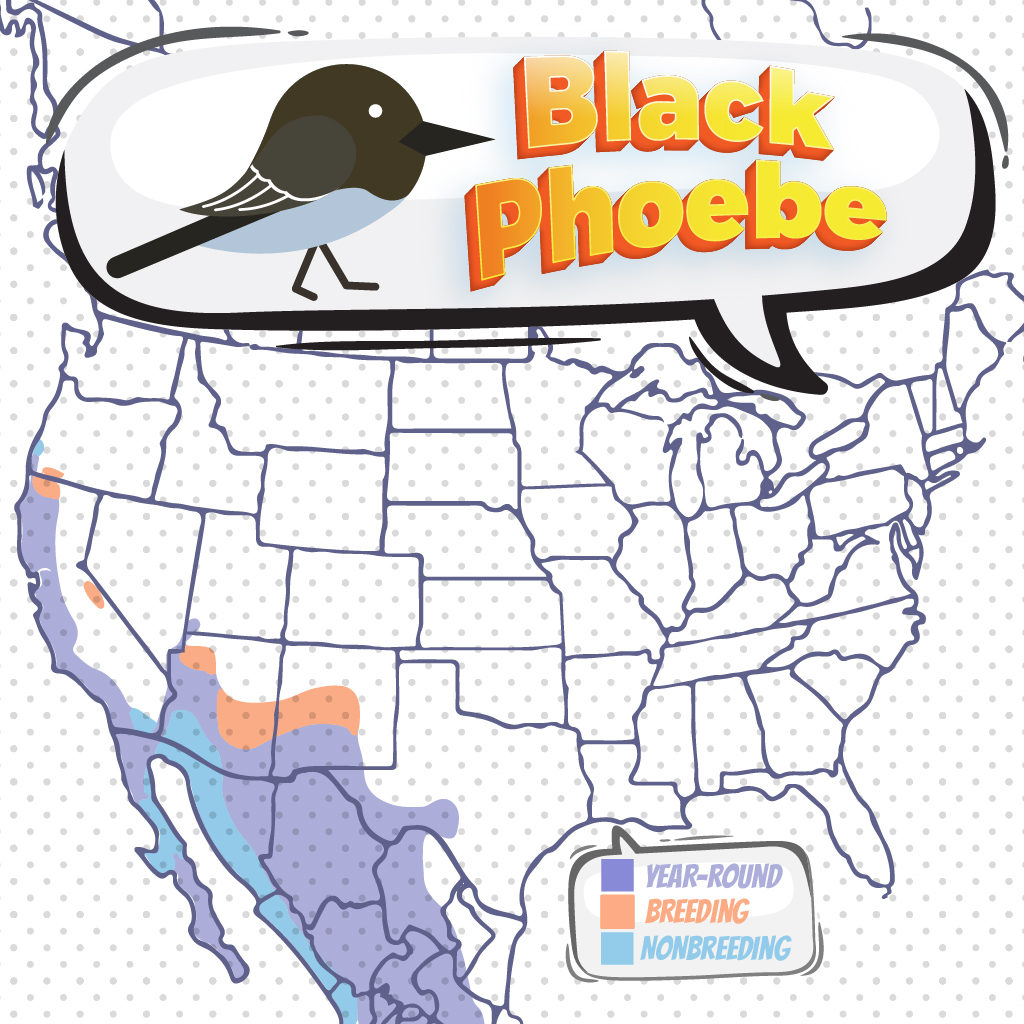
Black Phoebes are small, plump flycatchers widespread in the Western U.S. Their breeding range is
from southwest Oregon and California, towards Central and South America. Most Black Phoebes
are permanent residents but the northern populations of these birds are partially migratory. During
the fall season, the northern populations of these birds migrate towards lower elevations in the
South. Black Phoebes are gradually increasing in number, with their populations slightly extending
north. These birds have a tendency for vagrancy.
Black Phoebe Lifecycle
The females lay 3-6 eggs and incubate them for 15-17 days. The nestlings are fed by both parents and can leave the nest after 2-3 weeks. It has a maximum lifespan of 8 years.
Black Phoebe Nesting
Male Black Phoebes use their singing skills to court females, approaching them when they are
perched on a branch. The males then continue to hover around the females, chasing them if they
leave the perch. Black Phoebes are extremely territorial birds that aggressively defend their
nesting sites. Males present potential nest sites to females by hovering near them for a few
seconds. Females have the final say about the nesting site, which after finalization is built entirely
by her using mud and plant fibers. After laying 1-6 eggs, the incubation period lasts for 15-18 days.
Most Black Phoebes reuse the same nest site, or even the same nests for several years.
Ornithology
Bird Watching Academy & Camp Subscription Boxes
At Bird Watching Academy & Camp we help kids, youth, and adults get excited and involved in bird watching. We have several monthly subscription boxes that you can subscribe to. Our monthly subscription boxes help kids, youth, and adults learn about birds, bird watching, and bird conservation.
Bird Watching Binoculars for Identifying Black Phoebes
The most common types of bird watching binoculars for viewing Black Phoebes are 8×21 binoculars and 10×42 binoculars. Bird Watching Academy & Camp sells really nice 8×21 binoculars and 10×42 binoculars. You can view and purchase them here.
Black Phoebe T-shirts
If you love the Black Phoebe you should purchase a Bird Watching Academy & Camp T-shirt. To help support bird conservation we donate 10 percent to bird conservation activities.
Black Phoebe Iron On Patches
Kids, Youth, and Adults love to collect our Bird Watching Academy & Camp iron on patches. Our bird watching patches help you keep track of the birds you have seen an identified. You can also display the patches on our Bird Watching Academy & Camp banners.
The Black Phoebe is a great iron on patch to start your collection with. The patches are durable and can be sewn on or ironed on to just about anything.
Black Phoebe Stickers
Stickers are a great way for you to display your love for bird watching and the Black Phoebe. We sell a monthly subscription sticker pack. The sticker packs have 12 bird stickers. These sticker packs will help your kids learn new birds every month.
Bird Feeders For Black Phoebe
There are many types of bird feeders. Here are our favorite bird feeders for your backyard. We use all of these bird feeders currently. Kids will have a great time watching birds eat at these bird feeders. Using this collection of bird feeders will provide a wide variety and many types of birds.
Best Bird Houses for Black Phoebe
There are many types of bird houses. Building a bird house is always fun but can be frustrating. These 4 bird houses have become our favorites. Getting a bird house for kids to watch birds grow is always fun. We spent a little extra money on these bird houses but they have been worth the higher price and look great.


